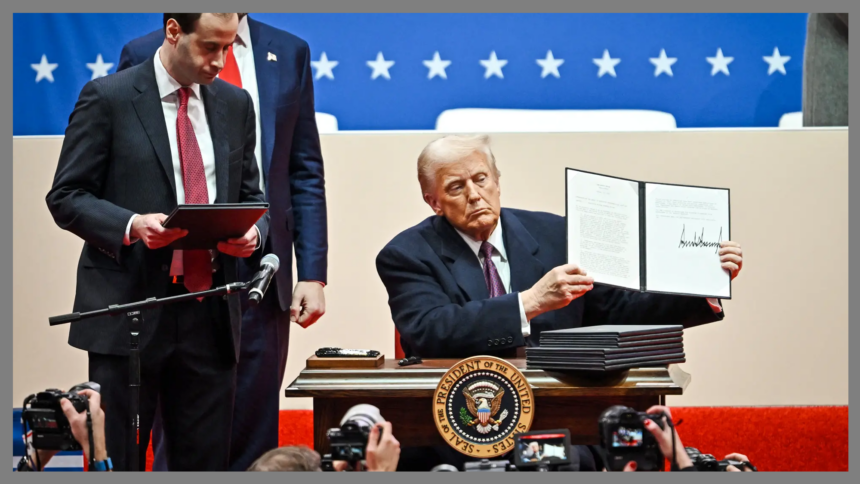In decisive Day One action, U.S. President Donald Trump rescinded two major executive orders from the Biden administration. These orders, targeting regulating artificial intelligence (AI) and tackling online censorship, were part of Biden’s push to create safer, more accountable systems for tech advancements and social platforms. Trump’s actions, which reverse these protections, are already sparking debate about the future of AI governance and free speech online. Let’s take a closer look at the impact of these decisions and what they mean for the tech industry and society.
What’s Happening & Why This Matters
Trump Rescinds Biden’s AI Safety Order
One of the first acts of Trump’s administration was to rescind the Biden administration’s Executive Order on the Safe, Secure, and Trustworthy Development and Use of Artificial Intelligence. Established in 2023, Biden’s order was designed to address both the potential benefits and risks of AI, including concerns about job loss, discrimination, and privacy violations. The order also aimed to ensure that AI development did not harm American workers or society.
In contrast, Trump’s move to cancel Biden’s AI safety order signals his commitment to reducing regulations on emerging technologies. Trump previously described AI as a “superpower” but warned about its “alarming” potential. He believes that AI development should be driven by innovation and free-market principles rather than regulatory oversight, a stance that aligns with his broader political platform. The cancellation of this order reflects his campaign promise to roll back what he sees as burdensome, left-wing policies affecting tech development.
While industry leaders like Microsoft’s Brad Smith and Google’s Kent Walker supported Biden’s initiative, claiming it was necessary for responsible AI governance, Trump’s decision reverses the momentum toward regulation. This could leave the U.S. more vulnerable than regions like the EU, with more stringent AI regulations, including bans on biometric data usage.
Trump Targets Federal Social Media Censorship

Alongside the AI order, Trump signed a new executive order aimed at “restoring freedom of speech and ending federal censorship” on social media platforms. This order prohibits any government agency, employee, or agent from using federal resources to suppress the free speech of U.S. citizens online. It comes as a response to accusations that the previous administration pressured social media companies, including Meta, to censor content it deemed as misinformation.
The order highlights Trump’s frustration with what he perceives as government overreach in curbing online expression. He specifically criticizes the Biden administration for its handling of misinformation, particularly regarding topics like COVID-19. Trump’s executive action seeks to ensure that social media platforms are not forced to act as “gatekeepers” for the government. The move also targets the practices of tech giants like Meta, which faced allegations of compliance with government pressure to remove content.
Interestingly, the order does not address the rise of misinformation, deepfakes, or other harmful content AI technology produces. Instead, it focuses solely on preventing government-led censorship. Critics argue that while free speech is essential, the unchecked spread of misinformation poses a growing threat to public safety and democracy.
Reactions and Outlook
Tech giants like Meta and Twitter (now X) have faced increasing scrutiny from lawmakers and the public over their content moderation practices. Zuckerberg’s recent testimony about Meta being pressured to censor posts related to the COVID-19 pandemic is a notable example of the tension between government regulation and tech company policies. The shift in policy under Trump may provide more freedom for social media platforms but could also embolden the spread of false information.
The move also raises questions about the future of AI regulation in the U.S. While some industry figures support a more hands-off approach, others believe that without proper oversight, the rapid development of AI could lead to unintended consequences. Trump’s executive orders suggest that the U.S. will maintain a more laissez-faire stance on these critical issues for now.
TF Summary: What’s Next
Trump’s rescindment of Biden’s AI safety and social media censorship orders marks a clear shift in U.S. policy on technology regulation. While it aims to foster innovation and protect free speech, these actions may open the door for greater risks in AI development and the unchecked spread of misinformation. As both the tech industry and the public adjust to these changes, the future of AI governance and social media policy in the U.S. remains uncertain. Expect continued debates over the balance between regulation and innovation, with a particular focus on how AI technologies and social media platforms will be governed in the coming years.
— Text-to-Speech (TTS) provided by gspeech


